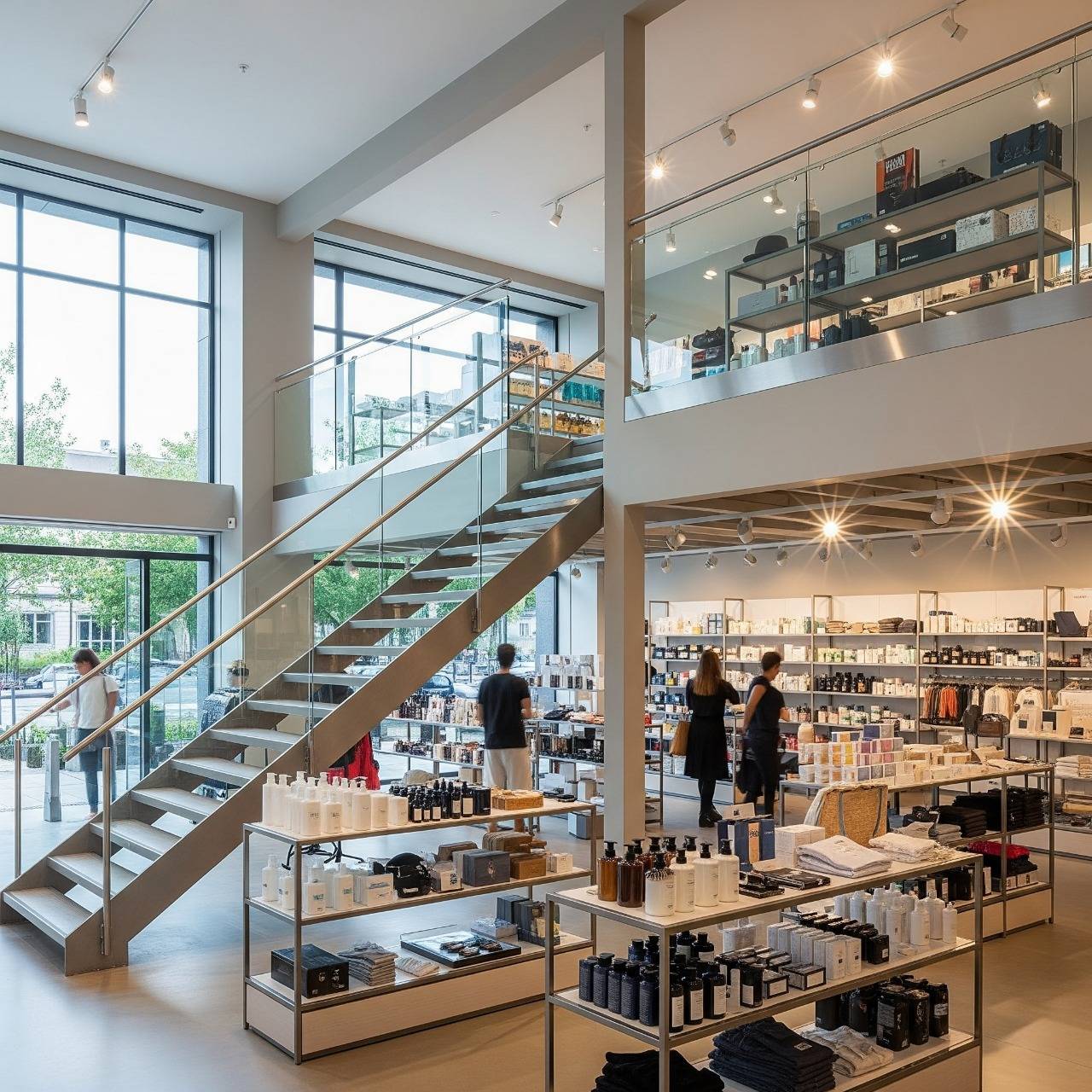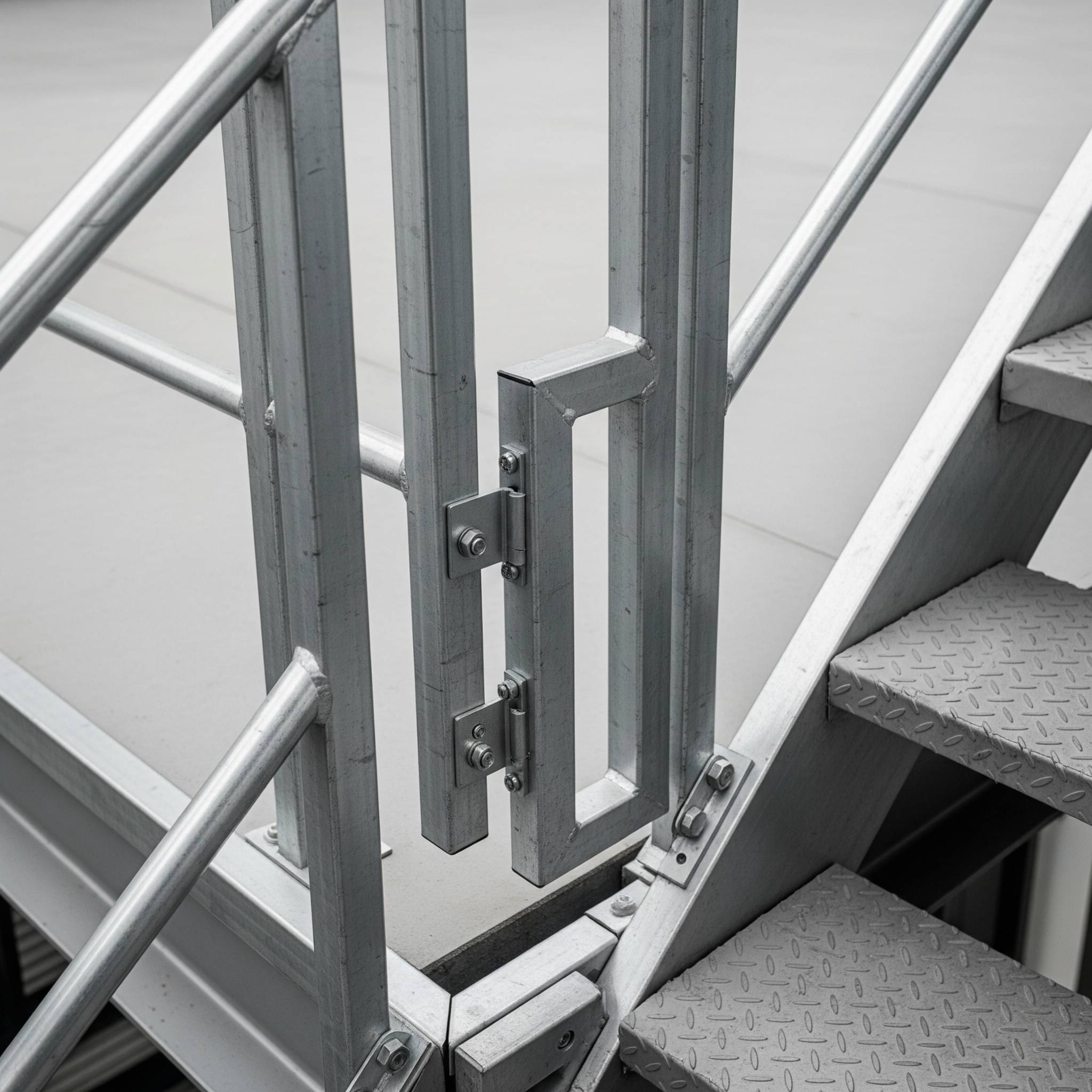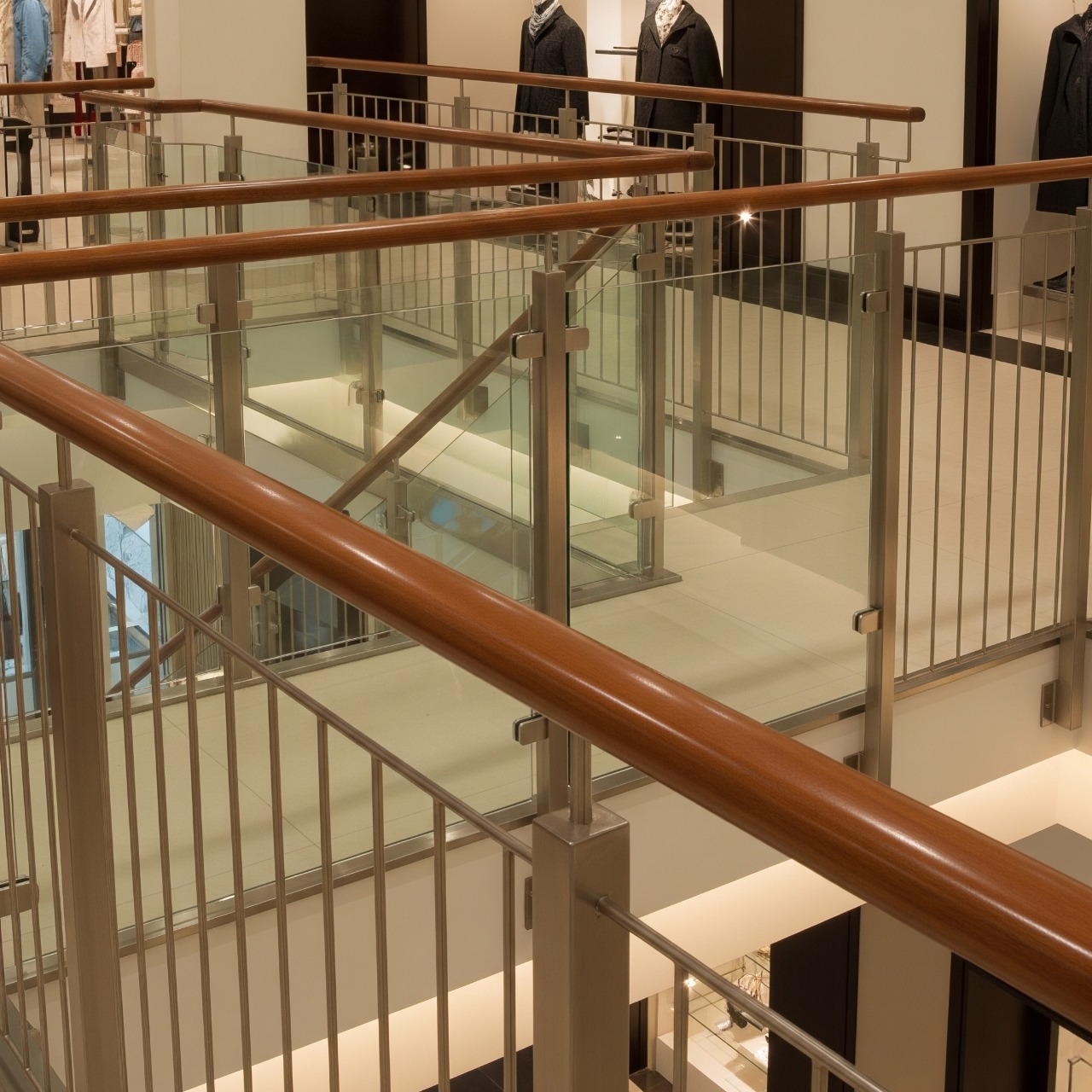The Role of Handrails in Staircase Safety and Compliance — Especially for Mezzanines

Handrails may seem like simple architectural details, but in reality, they’re a fundamental component of safety — especially in elevated areas like mezzanines. Whether you’re accessing a mezzanine office, storage platform, or showroom floor, the staircase leading to it must meet strict safety and compliance standards. Handrails are a core part of that equation.
Why Handrails Are Essential in Mezzanine Stair Design
Mezzanines often sit several feet above ground level, increasing the risks associated with falls and trips. A properly installed handrail provides critical support for anyone using the staircase — whether it’s staff, customers, or warehouse operators carrying equipment.
Because mezzanines are typically integrated into industrial, retail, or open-plan office environments, the foot traffic they carry can vary widely. In all these scenarios, handrails reduce liability, guide movement, and offer users physical reassurance when ascending or descending the stairway.
Safe by Design: Why Handrails Matter on Mezzanine Stairs
In any space that involves elevation — especially a mezzanine — handrails play a critical role in how people experience movement, balance, and security. While they might seem like a minor detail in the overall structure, handrails are actually one of the most used and relied-upon features in stair design.
In mezzanine settings, where stairs typically lead to upper storage, office, or showroom areas, foot traffic can vary significantly. Some users might be carrying boxes or walking in low-light areas, while others could be unfamiliar with the layout. A well-crafted handrail, positioned with care and built to endure frequent use, not only improves safety — it also communicates that the space is designed for people, not just functionality.
It’s also important to consider the materials and finish. In a polished office mezzanine, sleek timber or metal rails might double as a design feature, while in industrial spaces, rugged powder-coated steel provides the durability needed for daily wear and tear. Regardless of the setting, the purpose remains the same: keeping users grounded, safe, and confident as they move between levels.
Designing for Safety and Style in Mezzanine Environments
Beyond safety, handrails also contribute to the overall look and feel of a mezzanine area. In office or retail mezzanines, you’ll often see glass or powder-coated metal handrails that complement clean interior lines. In warehouses or manufacturing environments, galvanised or safety-yellow handrails provide visibility and durability under heavy use.
Final Word: Elevating Mezzanine Safety Through Handrails
Handrails are more than just a regulatory requirement — they play a vital role in ensuring the safety, accessibility, and everyday usability of mezzanine spaces. They help people feel secure, meet code requirements, and enhance the functionality and appearance of elevated spaces.
Whether you’re designing a new mezzanine or upgrading an existing one, investing in properly designed and code-compliant handrails ensures that your stairs do more than connect two levels — they protect everyone who uses them. Need help designing safe, stylish mezzanine stairs? Contact us to get started.




